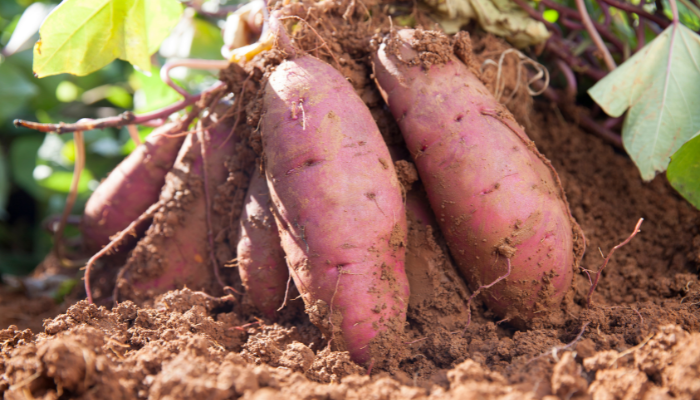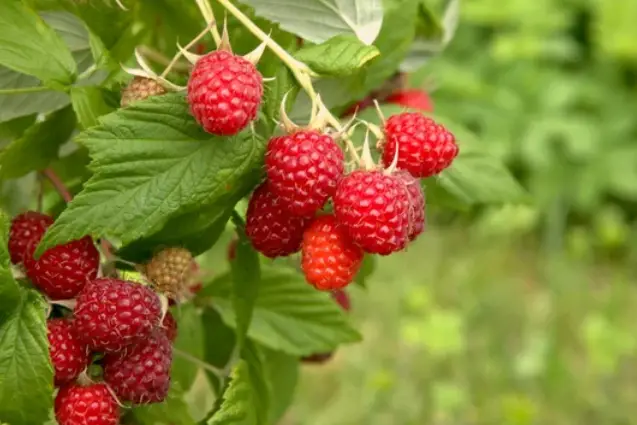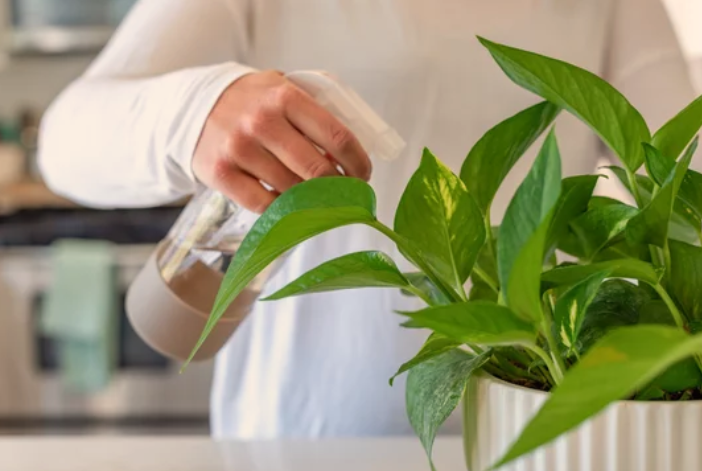Starting a Veggie Garden: Tips for Beginners
Starting a veggie garden is an exciting and rewarding experience for anyone who loves fresh produce. Whether you’re a seasoned gardener or a beginner, growing your own vegetables can be a fun and fulfilling hobby that can provide you with a healthy source of food. However, starting a vegetable garden can be daunting, especially if you’re new to gardening.
The first step in starting a veggie garden is to choose a suitable location. A good location should receive at least six hours of sunlight a day and have well-draining soil. It’s also important to consider the size of your garden and the amount of space you have available. If you have limited space, you can still grow vegetables in containers or raised beds. Once you have chosen a location, it’s time to start planning and preparing the soil for planting.
The Basics of Gardening

Starting a vegetable garden can be a fun and rewarding experience, but it does require some basic knowledge of gardening. Here are some tips to help you get started:
Soil
Good soil is essential for a successful vegetable garden. The soil should be rich in organic matter, well-draining, and have a pH level between 6.0 and 7.0. If your soil is lacking in nutrients, you may need to amend it with compost or other organic matter.
Sunlight
Most vegetables require at least six hours of direct sunlight per day to grow. Make sure you choose a spot in your garden that gets plenty of sun. If you don’t have a spot that gets enough sun, consider growing vegetables that can tolerate some shade, such as lettuce or spinach.
Watering
Vegetables need regular watering to thrive. Make sure your garden has easy access to water and that you water your plants deeply and regularly. Avoid watering during the hottest part of the day, as this can cause water to evaporate too quickly.
Planting
When planting your vegetables, make sure you follow the recommended spacing and depth for each plant. Overcrowding can lead to disease and poor growth. You may also want to consider companion planting, which involves planting certain vegetables together to help deter pests and improve growth.
Maintenance
Maintaining your garden is key to a successful harvest. This includes regular weeding, pruning, and fertilizing. You may also want to consider using organic pest control methods, such as companion planting or introducing beneficial insects.
By understanding the basics of gardening, you can set yourself up for a successful and bountiful vegetable garden.
Choosing the Right Location

Starting a vegetable garden can be a fun and rewarding experience. However, selecting the right location is crucial to ensure a successful harvest. Here are some factors to consider when choosing the right location for your vegetable garden.
Sunlight Exposure
One of the most important factors to consider when choosing a location for your vegetable garden is sunlight exposure. Most vegetables require at least six hours of direct sunlight per day to thrive. Therefore, it is important to choose a location that receives plenty of sunlight. If possible, select an area that gets full sun for six to ten hours a day. Some vegetables, such as leafy greens, can tolerate some shade, but most vegetables require full sun.
Soil Quality
The quality of the soil also plays a crucial role in the success of your vegetable garden. The soil should be well-draining, loose, and rich in organic matter. If the soil is too compact or lacks nutrients, it can hinder the growth of your vegetables. Before planting, test the soil’s pH level and nutrient content. You can also amend the soil with compost or other organic matter to improve its quality.
Water Accessibility
Water is another important factor to consider when choosing the right location for your vegetable garden. Vegetables require consistent watering, especially during hot and dry weather. Therefore, it is important to choose a location that is easily accessible to a water source. If you are using a hose or sprinkler, make sure the location is close enough to reach. If you are using a watering can, consider the distance you will need to carry it.
By considering these factors, you can select the right location for your vegetable garden and set yourself up for a successful harvest.
Selecting Your Vegetables

When selecting vegetables for a garden, it is important to consider both the seasonal and climate resilient varieties.
Seasonal Vegetables
Seasonal vegetables are those that are best planted and harvested during certain times of the year. This means that they will require less maintenance and will be more likely to produce a successful harvest. Some common seasonal vegetables include:
- Spring: peas, lettuce, spinach, radishes, carrots
- Summer: tomatoes, cucumbers, peppers, zucchini, beans
- Fall: broccoli, cauliflower, cabbage, kale, beets
It is important to note that these are general guidelines and the specific planting and harvesting times may vary based on the climate and location.
Climate Resilient Vegetables
Climate resilient vegetables are those that are able to withstand extreme weather conditions, such as drought or excessive heat. These varieties are becoming increasingly important as climate change continues to affect the environment. Some examples of climate resilient vegetables include:
- Drought tolerant: okra, sweet potatoes, eggplant, peppers
- Heat tolerant: tomatoes, cucumbers, melons, squash, beans
It is also important to consider the soil conditions and sunlight requirements when selecting vegetables for a garden. Some vegetables, like tomatoes, require full sun while others, like lettuce, can tolerate some shade.
By carefully selecting seasonal and climate resilient vegetables, a successful and sustainable garden can be created.
Preparing the Garden Bed
Before planting vegetables, it is important to prepare the garden bed properly. This will help ensure healthy plant growth and a bountiful harvest. The following sub-sections will cover soil preparation and spacing and planting.
Soil Preparation
The first step in preparing the garden bed is to test the soil. A simple soil test kit can be purchased at a garden center or online. This will help determine the pH level of the soil and any nutrient deficiencies that need to be addressed.
Once the soil has been tested, it is important to amend it with organic matter such as compost or aged manure. This will help improve soil fertility and structure. It is recommended to add about 2-3 inches of organic matter and mix it into the top 6-8 inches of soil.
In addition to organic matter, it may be necessary to add other soil amendments such as lime or sulfur to adjust the pH level. Follow the recommendations from the soil test to determine the appropriate amount of amendments to add.
Spacing and Planting
Proper spacing and planting is essential for healthy plant growth. The spacing requirements for each vegetable will vary, so it is important to research the specific requirements for the vegetables being planted.
When planting, it is important to follow the recommended depth and spacing for each seed or transplant. This information can usually be found on the seed packet or plant label.
It is also important to consider companion planting when planning the garden bed. Certain vegetables grow well together and can help deter pests and improve soil health. For example, planting marigolds with tomatoes can help repel nematodes and other harmful insects.
In summary, preparing the garden bed is an important step in starting a vegetable garden. Testing and amending the soil and properly spacing and planting the vegetables will help ensure a successful harvest.
Maintaining Your Garden
Once your vegetable garden is established, it’s important to maintain it properly to ensure a good harvest. This section will cover some basic techniques for watering, weeding, pruning, and pest control.
Watering Techniques
Water is essential for plant growth, but it’s important to water your garden correctly. Overwatering can lead to root rot, while underwatering can cause plants to wilt and die. The best time to water your garden is in the morning or late afternoon, when temperatures are cooler and the water is less likely to evaporate.
It’s also important to water deeply and infrequently, rather than giving your plants a light sprinkle every day. This encourages deeper root growth and makes your plants more drought-resistant. To determine when to water, stick your finger into the soil. If it feels dry up to your first knuckle, it’s time to water.
Weeding and Pruning
Weeds can quickly take over your garden and compete with your vegetables for nutrients and water. To keep them under control, it’s important to pull them out by the roots as soon as you see them. You can also use mulch to suppress weeds and retain moisture in the soil.
Pruning is another important technique for maintaining a healthy garden. It involves removing dead or diseased plant material, as well as any branches that are crossing or rubbing against each other. This helps to promote air circulation and prevent the spread of disease.
Pest Control
Pests can be a major problem in any garden, but there are several ways to control them without resorting to harmful chemicals. One approach is to use companion planting, which involves planting certain herbs and flowers alongside your vegetables to repel pests. For example, marigolds can deter nematodes, while basil can repel aphids.
Another technique is to use physical barriers, such as row covers or netting, to keep pests out of your garden. You can also use organic pest control products, such as insecticidal soap or neem oil, to target specific pests without harming beneficial insects.
By following these basic techniques for maintaining your vegetable garden, you can ensure a healthy and productive harvest.
Harvesting and Storing
Growing your own vegetable garden can be a rewarding experience, but it’s important to know how to properly harvest and store your produce to ensure its longevity. Here are some tips for harvesting and storing your homegrown vegetables.
When to Harvest
Knowing when to harvest your vegetables is essential to getting the best flavor and texture. Here are some general guidelines for when to harvest common garden vegetables:
- Tomatoes: When they are fully ripe and have a deep color
- Peppers: When they reach their full size and have a firm texture
- Cucumbers: When they are firm and have a bright color
- Squash: When they are small to medium in size and have a glossy skin
- Beans: When they are firm and have a bright color
- Lettuce: When the leaves are full and have a crisp texture
It’s important to harvest your vegetables before they become overripe or start to rot. Check your garden frequently to ensure you are harvesting your vegetables at the right time.
Proper Storage Methods
Once you’ve harvested your vegetables, it’s important to store them properly to extend their shelf life. Here are some tips for storing your vegetables:
- Keep them dry: Moisture can cause vegetables to rot, so make sure they are completely dry before storing them.
- Store them in a cool, dark place: Most vegetables will last longer if stored in a cool, dark place like a pantry or cellar.
- Don’t wash them until you’re ready to use them: Washing vegetables can cause them to spoil faster, so only wash them when you’re ready to use them.
- Store them in the right container: Some vegetables, like tomatoes, are best stored at room temperature, while others, like lettuce, should be stored in the refrigerator. Make sure you’re storing your vegetables in the right container for their specific needs.
By following these tips, you can ensure your homegrown vegetables stay fresh and delicious for as long as possible.
Expanding Your Garden
Once you’ve successfully started your vegetable garden, you may be eager to expand it and grow even more fresh produce. Here are a few tips to help you expand your garden.
Adding New Vegetables
One way to expand your garden is to add new vegetables to it. When choosing new vegetables to grow, consider the climate and soil conditions in your area. Some vegetables, such as tomatoes, require a lot of sunlight, while others, such as lettuce, prefer cooler temperatures and partial shade.
It’s also important to consider the amount of space you have available in your garden. Some vegetables, such as zucchini and squash, require a lot of room to grow, while others, such as herbs, can be grown in small pots or containers.
Scaling Up
If you have the space and resources, you may want to consider scaling up your garden. This could involve adding more raised beds or expanding your existing garden plot.
Before scaling up, consider the amount of time and energy you have available to devote to your garden. A larger garden will require more maintenance and care, so make sure you’re up for the challenge.
You may also want to consider adding some new features to your garden, such as trellises or vertical planters, to maximize your growing space. These features can be especially helpful if you’re working with limited space.
Expanding your vegetable garden can be a fun and rewarding experience. By adding new vegetables and scaling up your garden, you can enjoy even more fresh produce and reap the benefits of gardening.
Frequently Asked Questions
What are some essential steps to starting a successful vegetable garden?
Starting a vegetable garden requires some essential steps to ensure success. First, choose a sunny spot that gets at least six hours of direct sunlight per day. Next, ensure that the soil drains well and doesn’t stay wet. If the soil is poorly drained, consider planting vegetables in a raised bed or raised row for improved drainage. Then, choose the right plants for your garden based on your climate, soil type, and available space. Finally, prepare the soil by adding compost or other organic matter to improve soil quality.
How do I choose the right plants for my vegetable garden?
Choosing the right plants for your vegetable garden depends on several factors, including your climate, soil type, and available space. Consider which vegetables grow best in your region and choose plants that are suited to your soil type. Also, take into account the amount of space you have available and the amount of sunlight your garden receives. Some vegetables require more space and sunlight than others, so choose plants that will thrive in your garden’s conditions.
What are some common mistakes to avoid when starting a vegetable garden?
There are several common mistakes to avoid when starting a vegetable garden. One mistake is not choosing the right plants for your garden’s conditions. Another mistake is not preparing the soil properly before planting. It’s also important to avoid overcrowding plants and not providing enough space for them to grow. Additionally, failing to water plants regularly and not controlling pests can also lead to problems in your vegetable garden.
How do I prepare the soil for my vegetable garden?
Preparing the soil for your vegetable garden is an important step in ensuring success. Start by removing any weeds or debris from the area. Then, add compost or other organic matter to improve soil quality and fertility. Mix the compost into the soil to a depth of at least six inches. Finally, rake the soil to create a smooth, even surface for planting.
What are some effective ways to keep pests out of my vegetable garden?
Keeping pests out of your vegetable garden is essential to ensure healthy plants and a good harvest. One effective way to keep pests out is to use physical barriers, such as row covers or netting. Another option is to use organic pest control methods, such as companion planting or using natural predators like ladybugs or praying mantises. It’s also important to keep the garden clean and free of debris, which can attract pests.
What are some tips for maintaining a healthy vegetable garden throughout the season?
Maintaining a healthy vegetable garden throughout the season requires regular care and attention. Water plants regularly, especially during dry spells, and fertilize them as needed. It’s also important to weed the garden regularly to prevent competition for nutrients and water. Finally, monitor plants for signs of pests or disease and take action promptly to prevent further damage.







